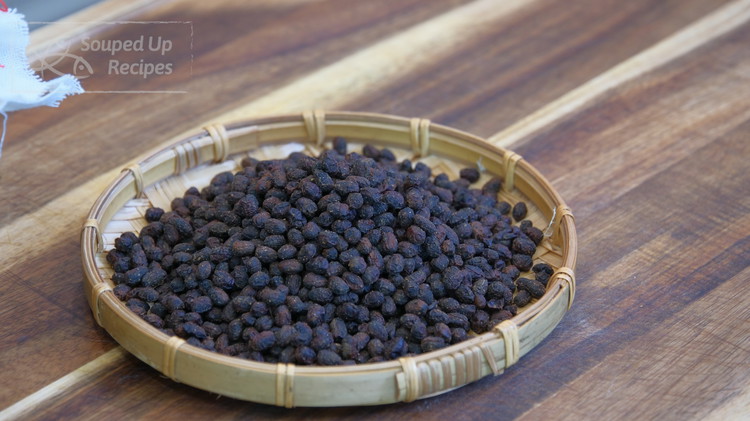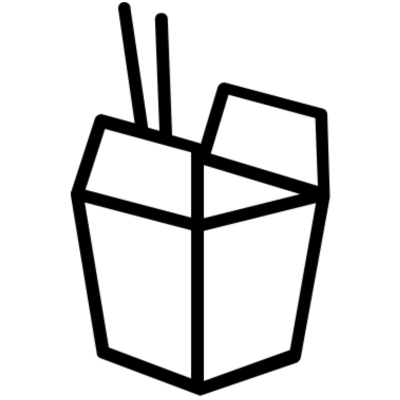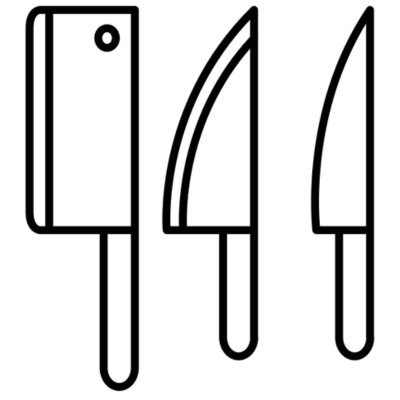Homemade Fermented Black Beans
Rated 4.2 stars by 5 users
Author:
Souped Up Recipes
Today, I want to show you how to make a special ingredient from scratch: fermented black beans, also known as Douchi. The taste is rich, complex, and salty. It adds a unique depth of flavor to many Chinese dishes (see the list below). However, Douchi can be difficult to find outside of China, especially if you don't have access to Asian markets.
Here is a playlist of the recipes that you can cook with these fermented black beans and dive into authentic Chinese cuisine.
- Mapo tofu - https://youtu.be/g9DNcb7cs2s
- Chinese eggplant and yard bean stir fry - https://youtu.be/ZcSE8GC7XmI
- Beef and bitter melon in black pepper sauce - https://youtu.be/0_Ldv0PgsEo
- Pepper Steak in Black Bean Sauce - https://youtu.be/wzf-qVhP-6M
- Hakka Style Stir Fry Silver Needle Noodles - https://youtu.be/2q1uIEACkvY
- Cantonese dim sum ribs - https://youtu.be/YCi7tnrB3qM
- Cantonese Dim Sum Chicken Feet Recipe - https://youtu.be/gEtbrCZ1P4k
- Spicy Anchovies Recipe - https://youtu.be/0ASSDbnSc9I
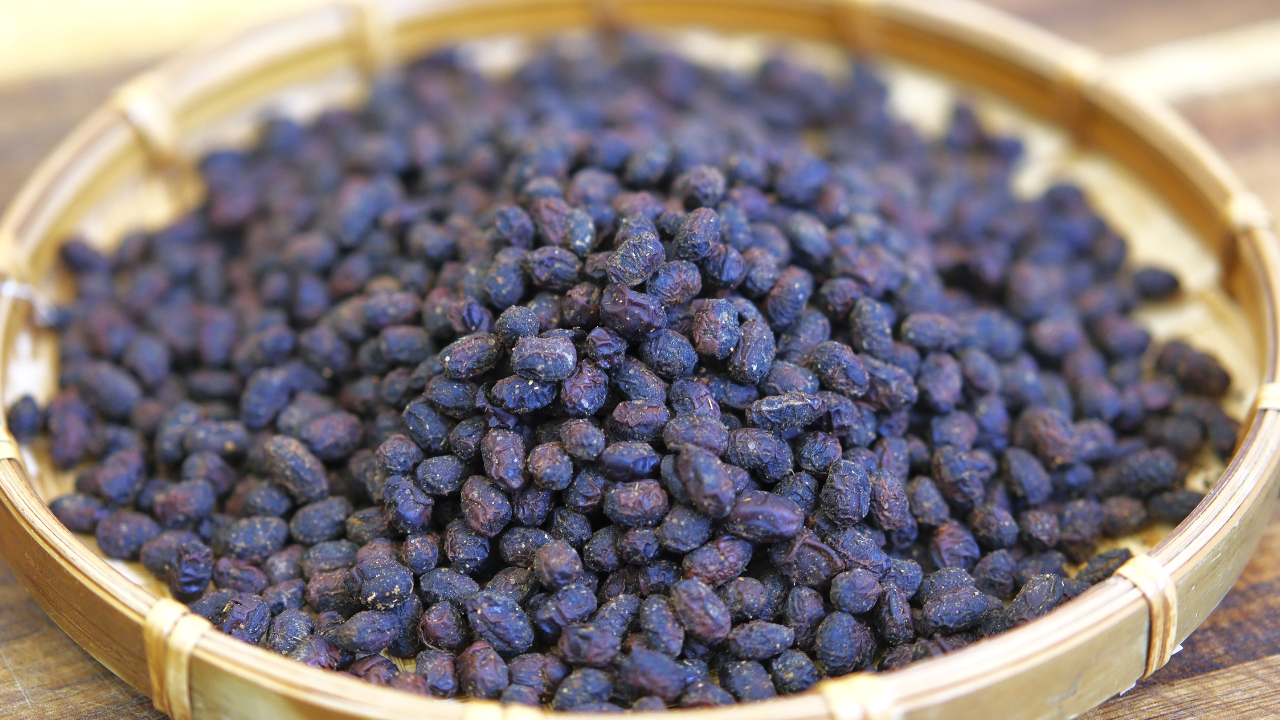
Ingredients
- 227g / 8oz of black beans or soybeans, soaked overnight
- 1g / ⅓ tsp of fermented black bean koji
- 2.5 tbsp of high alcohol content liqueur
- 25g / 1.5 tbsp of salt
- 12.5g / 1 tbsp of sugar
- 1 tsp of five-spice powder
- 1/2 tbsp of red chili powder
- 3 tbsp of high alcohol content liqueur to put into the shot glass
Directions
- First, we will talk about the beans because I want to show you two different types.
- I purchased the first one from Walmart. I believe these black beans are commonly used for making bean soup. Their shape is a bit longer, kind of like a kidney. They are not good for fermenting because they become too tender after cooking; the grains will break open after cooking. I am not saying you can not use the regular soybean at all. It is just that the end result will not look pretty. If you don't care about the presentation, go ahead and use it.

- The beans on the right side were purchased from an Asian market; you can see the shape is more round, like beads. Their texture is firmer, so the grains are able to keep the complete shape after steaming. By the way, this recipe also works with soybeans. Fermented soybean is also popular in Chinese cuisine. I made it before and I will show you how it looks at the end of the video.
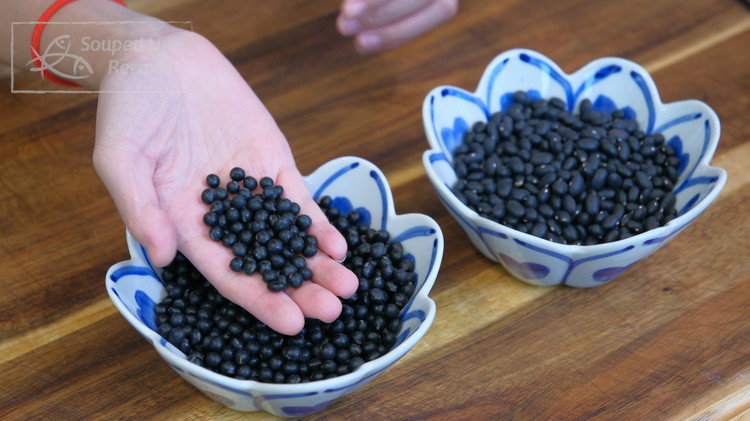
- Soak the beans with clean water overnight. Drain them and rinse them with running water.
- Place a cheesecloth in the steamer and put the black beans on it. Turn the heat to medium and steam them for 40 minutes. Start counting the time after the water has come to a boil. I don't recommend using bamboo steamers because the black beans stain.

- Once done, take the black beans out. Make sure to tab a few times so you let the excess water drain.

- Transfer the beans to a tray and dehydrate them in a dehydrator at low temperature for 1 hour. If you don't have a dehydrator, you can place the beans under a ceiling fan and set the fan at the highest speed. Let it dry for about 2 hours. During this time, come back once every 20 minutes to stir it.
- Once done, you should see no obvious moisture, but the beans should be damp and slightly tacky. If it is too dry; the koji can't multiply.
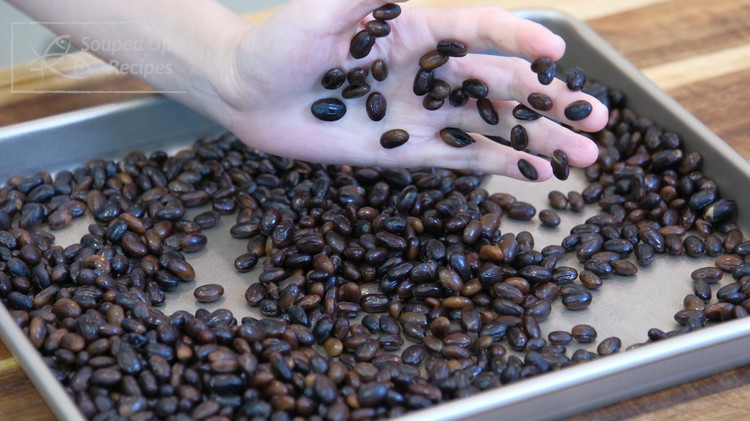
- Transfer the black beans into a bowl, add 1g of fermented black bean koji, and mix thoroughly. Koji is a type of fungi that is carefully domesticated for fermenting purposes.
- Next, find a proper container to allow the koji to grow. I am using a double-layer stackable basket. The inner basket will lift the beans, which allows air circulation.
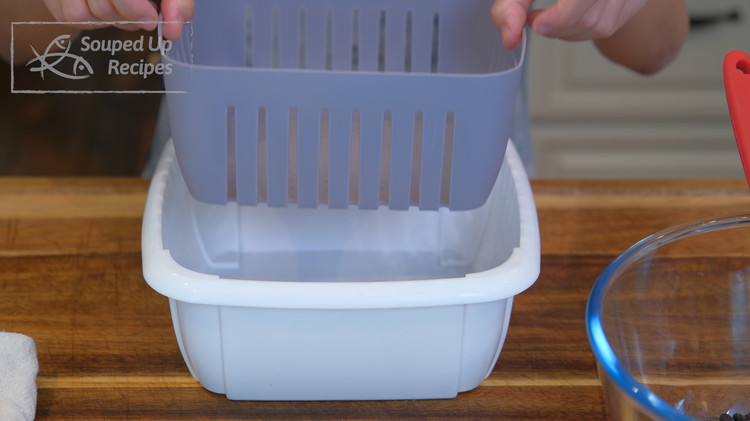
- Place a clean cheesecloth, put the black beans in, and wrap them well. Tack it with something heavy. Cover it with a lid to retain the moisture. However, the lid should not be airtight because the koji needs oxygen to multiply.
Leave the beans at room temperature for 2-3 days. Feel free to open it and take a look. When all the black beans are covered by grayish-white mycelium, you are good to go.
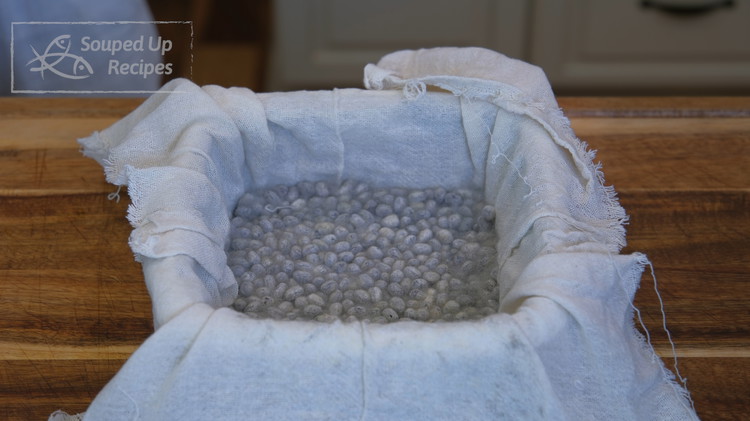
- Take the beans out of the basket, crumble the grains, and rinse the beans with clean water several times.
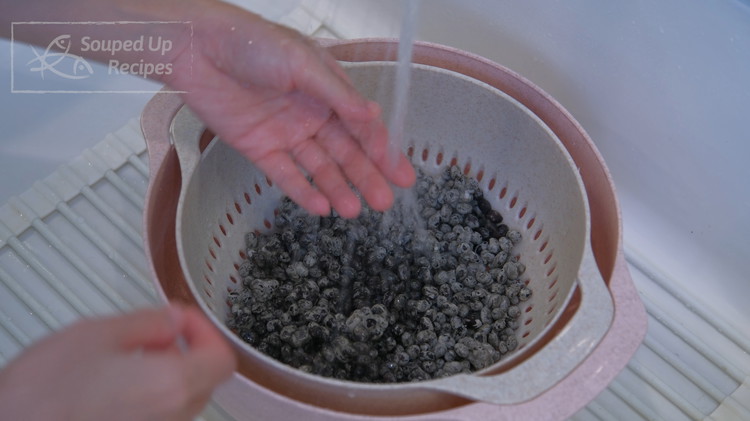
- Put the beans back into a tray and dehydrate them again in the dehydrator at low temperature for 6 hours. During the dehydration, you have to come back to stir them once every hour. We want the beans to come out dry. Moisture will encourage the bad bacteria to grow and lead to failure.

- Transfer all the dehydrated beans into a mixing bowl. Season them with 2.5 tbsp of high-alcohol content liquor (I used vodka; other liquor such as Rum or whiskey will also work.), 25g / 1.5 tbsp of salt, 12.5g / 1 tbsp of sugar, 1 tsp of five-spice powder, and optionally, some chili powder. Mix thoroughly.
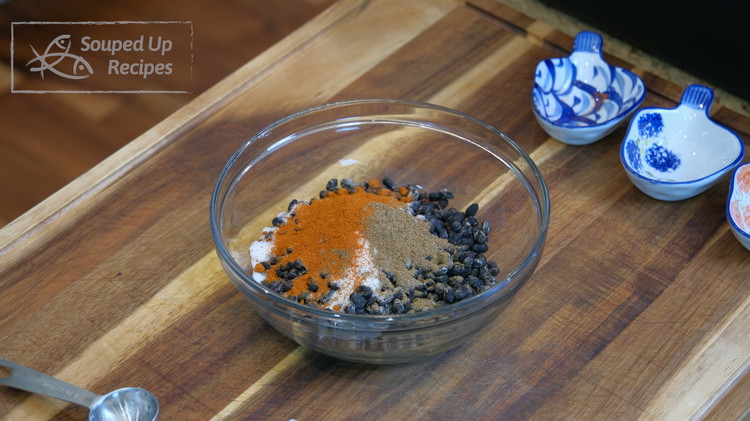
Put the black beans into a wide-mouth mason jar.
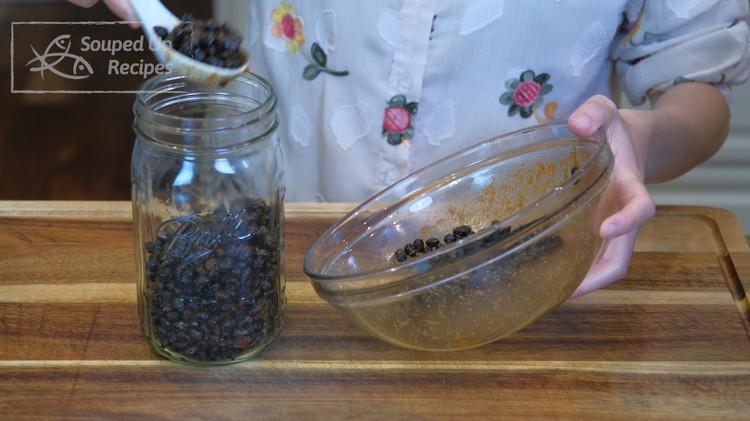
- Fill a small glass with 3 tbsp of high-alcohol-content liquor. Dig a small hole in the middle of the beans and carefully place the glass into the mason jar. Use a pair of chopsticks to compact the beans around the glass so it doesn't fall. The purpose of the liquor is that the alcohol will volatilize and fill up the top empty space in the jar. That creates a natural barrier and prevents bad bacteria from growing.
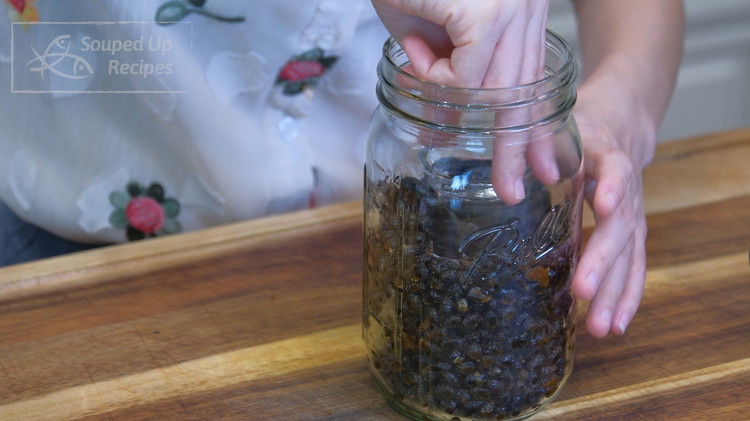
- Cover the mason jar with a clean cheesecloth, tie the cheesecloth with a rubber band, and place a bowl upside down to cover the jar. Do not seal the jar because the fermentation needs oxygen. Leave the jar at room temperature for at least 60 days or until all the liquor is evaporated.
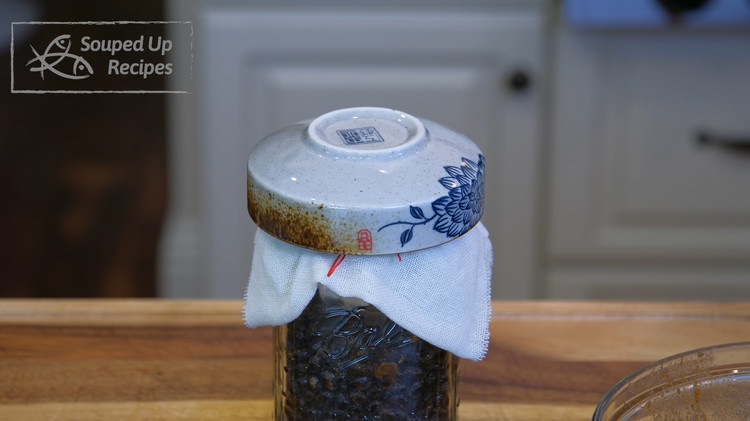
How to store fermented black beans?
After 60 days of fermenting, store the beans in a sealed jar. They will stay good for 6 months at room temperature and 24 months in the fridge.
